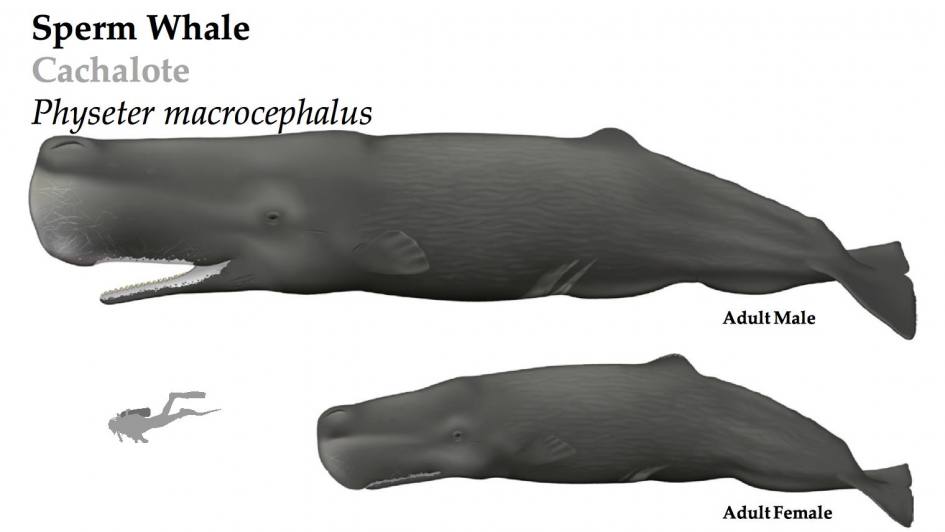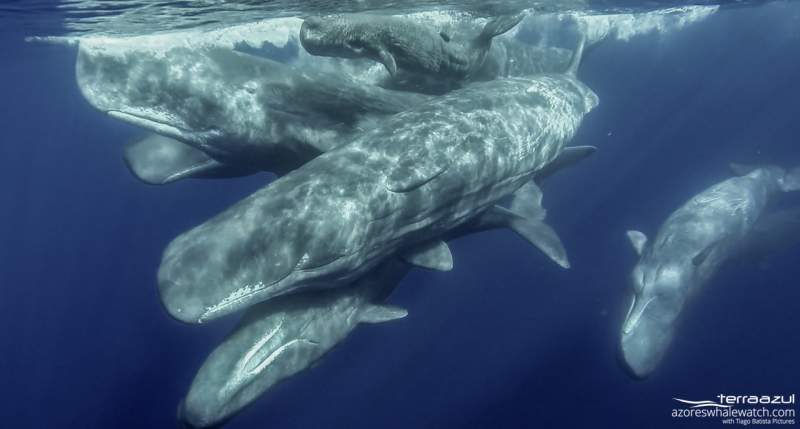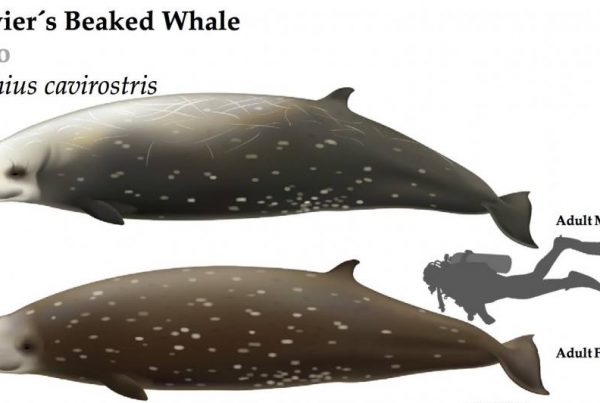
Sperm Whales are the largest existing toothed whale. The name is a reference to the white liquid contained in the spermaceti organ which is situated in the dorsal section of the head. The first whalers believed that it was the seminal fluid of the whale and, consequently, named them Sperm Whale. Now we know that this liquid is most likely involved in the buoyancy control that allow Sperm Whales to dive and resurface efficiently.
CHARACTERISTICS
- Latin name : Physeter macrocephalus
- Suborder : Odontoceti
- Family: Physeteridae
- Length : 11 to 15 m (female) – up to 18 m (male)
- Weight : 15 to 40 tons – up to 50 tons
- Dive time : up to 2 hours, average 30 minutes
- Dive depth: up to 2000 m
- IUCN Status: Vulnerable

Worldwide distribution of Sperm Whales. Source: Encyclopedia of Marine Mammals IIIrd Ed. Bernd Würsig, I. G. M. Thewissen & KIT M. Kovacs
DESCRIPTION
Color: Dark grey, sometimes some white marks that increase size with age. The skin is wrinkled.
Head: Huge head, more than the one-third of the animal. A single blowhole on the left side of the head, on the tip of the rostrum.
Fins: The dorsal fin is absent and replaced by a dorsal ridge. The pectoral fins are very small and located close to the eyes.
Teeth: Two rows of approximately 20-30 teeth in the lower jaw. Teeth probably erupt around the tenth year and are much larger in males (up to 20 cm).
LIFE HISTORY
DIET
Cephalopods (squid, octopus…), demersal and pelagic fish. Prey is echolocated and captured during deep dives.
REPRODUCTION
Sexual maturity is reached at around 20 years (males) and 10 years of age (females). The gestation is approximately 14-16 months. At the birth, the calf is approximately 3.5 to 4.5 m. Calves suckle for several years but they can start to eat solid food at 12 months of age.

Sperm whale (Physeter macrocephalus) matriarchal pod socializing. A newborn calf is visible near the surface.
SOCIAL ORGANIZATION
Females with the calves and juveniles form long term aggregation called matriarchal pods or clans that can be constituted by up to 20 individuals. In Azores pods are generally smaller, averaging six individuals, but clans of 13 whales have been observed. Males between 5 and 13 years of age generally leave the pod to migrate in colder waters. When male reach sexual maturity they become solitary and are called «bulls».
VOCAL BEHAVIOR
Sperm Whales use clicks both for echolocation of the prey and for social communication with others individual whales. Each matriarchal pod or clan has specific sequences of clicks called coda. You can listen to the codas of azorean Sperm Whale in this recording collected by Terra Azul Crew.

Sperm whale (Physeter macrocephalus) calf breaching.








